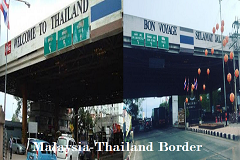Importance of Seat Belts and its Awareness among Malaysian Drivers
- On Jan, 9, 2023
- Admin
The seat belt is considered one of the most important parts of the car, as it saves annually the lives of millions of people. In the following article, we will talk about the history of the seat belt and its stages of development.
The main reason, which has made driving safer today than it was in the 1960s, is introduction to seat belts in vehicles. This is correct as the use of seat belts doubles the survival rate in the event of a collision. Seat belts have reduced the mortality rate each year in a car accident, potentially saving more than a million lives since 1959.

History of Seat Belt
Today, most people get into cars and buckle up without a second thought. However, this has not always been the case in countries around the world. Originally, the idea of the seatbelt came in the 19th century from an English engineer named Sir George Cayley (27 December 1773 – 15 December 1857) trying to keep pilots safe inside their gliders. People started fastening their seat belts as early as the first cars to reduce recoil. In the 1930s, doctors in the United States equipped their cars with lap belts and urged car manufacturers to provide them in all new cars.
The year 1950, saw the first factory seat belts installed on the Nash Statesman and Ambassador Models. Retractable seat belts in automobiles were first introduced in the early 1950s by neurologist, Dr. C. Hunter Shelden (March 27, 1907 - 2003 (95-96), Minneapolis, Minnesota, United States), as a way to prevent people suffering head injuries associated with automobile accidents. Nils Ivar Bohlin (17 July 1920 -- 21 September 2002), a Volvo design engineer, patented the first three-point seat belt in 1958, but shared the design with their competitors in an effort to increase safety for all.

There were no seat belt implementation regulations in the United States until the National Vehicle and Traffic Safety Act of 1966 instituted what is now the National Highway Traffic Safety Administration (NHTSA). The first seat belt law, Federal law 49 USC Chapter 301, Vehicle Safety Standard, went into effect in 1968. The law required manufacturers to install seat belts in vehicles. However, the use of seat belts did not become mandatory until every state in the United States instituted their own seat belt laws. In 1984, New York became the first state to require drivers to use seat belts. Over the next eleven years, other 48 states instituted seat belt laws.
The population of the United States today is more than 320 million while it was 215 million in 1976. There are more drivers on the road today. This would make you think that there would be a greater total number of fatal car accidents in the United States today. This is not the case because of the seat belts. Seat belts, along with automatic safety features and testing, are a major reason why driving is safer today than it was 40 years ago.
In Malaysia, the importance of seatbelt was recognized almost 50 years back. This is reflected by the enforcement of mandatory use of seatbelt law in 1978. However, this initial enforced law only covers for drivers and front-seat passengers. This law was then extended to the rear passengers on the 1 January 2009, about 30 years later. This slow progress on seatbelt enforcement has limited its widespread use among Malaysian (Kulanthayan et al., 2004).
The lack of actual Malaysian crash data in the existing seatbelt studies is a one of the biggest obstacle to conduct any scientific study. However, in 2020, a study was conducted which involved MIROS crash investigation data, particularly on passenger vehicles. These passenger vehicle crashes are the high profile crash cases investigated by MIROS crash reconstruction unit from the year 2007 until 2014. The high profile crashes refer to the passenger vehicle collision resulting in three (3) fatalities and above. In this study, 268 crashes involving 376 passenger vehicles and 1299 occupants were analyzed. Below are the results of this research study:
Percentage of Survivability by Seatbelt Compliance
| Belted | Unbelted | ||
|---|---|---|---|
| Survive | Fatal | Survive | Fatal |
| 12.2% | 13.6% | 31.9% | 42.4% |
| Total= 25.8% | Total= 74.3% |
Comparison revealed that only 25.8% of passengers were fastening their seatbelt while another 74.3% were not. The number of unbelted occupants is significantly 3 times higher than belted. This number shows a very low awareness of seatbelt wearing among vehicle occupants in Malaysia (MIROS, MRR No. 317, 2020).
Function of Seat Belt
When someone gets into a traffic accident, the car suddenly stops. The body wants to keep moving forward because it is going at the same speed as the car was before. The seat belt and, secondarily, the airbag stop the person's forward momentum. The seat belt reduces the force your body receives by distributing the impact energy to the stronger bony parts of the body. The seat belt features strong connective mechanisms, pretensions and straps to immobilize the stronger parts of the body, such as the shoulders and hipbones. This reduces the range of motion a person can have while in car seats. During a crash, the seat belt keeps and holds back the body in the seat, allowing time for the body to stop.
The seat belt plays an important role in protecting car passengers from various accidents, and despite the ease of fastening it; there are some minor mistakes that car occupants do while fastening it.
We will mention some tips for you to avoid them:
1. Fasten the seat belt and make it pass over the neck and not over the collarbone and shoulder.
2. Do not let the belt pass under the armpit.
3. Do not let the belt pass over hard objects inside the user's pockets.
4. Do not wear a thick jacket unless it is zipped up.
In the end, we will propose few recommendations:
1. Proper awareness program should be carried out to the whole nation generally and to the selected groups especially.
2. Awareness campaign should be given priority to the new generation educating them from grassroots level such as kindergarten and primary school students.
3. All available platforms should be utilized for seatbelt awareness campaign for example, print media, electronic media and most importantly digital media.
4. Seatbelt wearing compliance was determined based on investigators individual judgement during investigations, which was performed based on the observation of physical evidence. With arrival of modern technology, it is possible to record the usage of seatbelt using sensors or electronic chips. Abrasive marks on seatbelt are not enough to prove that driver was wearing seatbelt when accident was occurred.
5. Seatbelt awareness campaign should have attentive, attractive and impressive slogans, such as take care of your seatbelt it will take care of you, driving begins with buckling up, wear belt drive safe, being belted being blessed etc.
References
Kulanthayan, S., Law, T.H, Raha, A.R. (2004). Seat belt use among car users in Malaysia. International Association of Traffic and Safety Sciences Research, 28(1), 19-25.
MIROS. (2020). Effect of Seatbelt Wearing on Injury Severity in Passenger Vehicle Fatal Collision, MRR No. 317.
Do you want to know challenges faced by female drivers in Malaysia? If yes then, read following aticle:
“Difficulties and Challenges Faced by Female Drivers in Malaysia"
About the Author
Dr. Hafiz Abbas holds a PhD in Usuluddin from Universiti Sultan Azlan Shah (USAS), Malaysia. He is well versed with Islamic theology, Seerat-un-Nabi (SAW), and principles of Hadith. In addition, he is a teacher of Arabic.
Edited by: Ch. Mahmood Anwar
Do comment on this article if you liked our post!





















